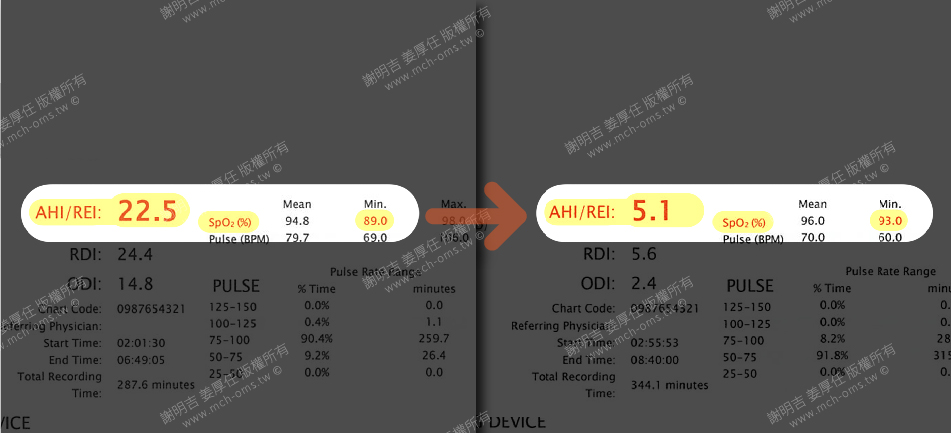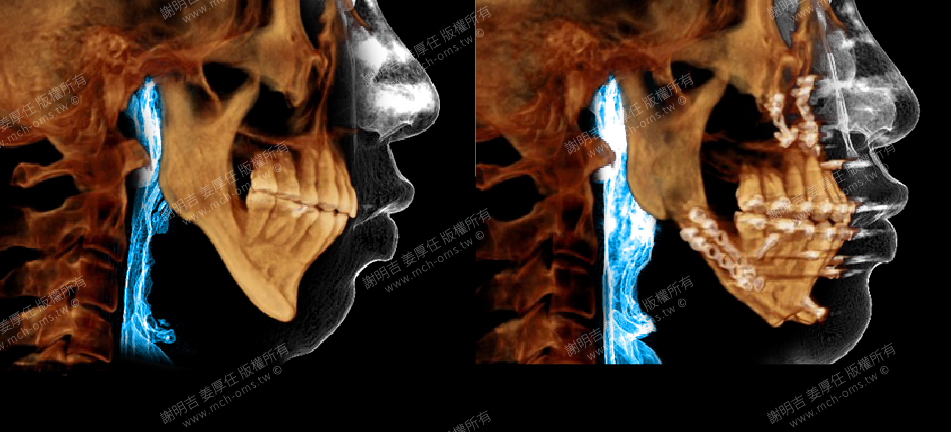| Preoperative symptoms | surgical plan |
| Retruded jaw, no chin affecting airway space, sleep apnea | 3D customized orthognathic surgery |
Diagnosis and treatment plan and postoperative changes
The case shared today is a 39-year-old male patient who was referred by an orthopedist. He complained that he was always drowsy during the day, had constant nasal congestion, snored at night and had sleep apnea.
The sleep test found that his AHI index was 22.5 and the lowest blood oxygen concentration was 89%. He also tried positive pressure respirator treatment, but because it was so uncomfortable, he turned to surgery.
Computerized tomography showed that his upper and lower jaw bones were underdeveloped and compressed backwards, causing a narrowed airway. We designed a double-jaw orthognathic surgery for him, including Le Fort I osteotomy, bilateral sagittal split osteotomy, counterclockwise rotation of the occlusal plane, and forward lifting of his middle and lower facial bones.
In addition, during the same operation, the distorted nasal septum and the lower nose clips that were reduced on both sides were adjusted (the lower nose clips need to be molded, and the thickening of the lower nose clips may also cause respiratory obstruction).
Three months after the operation, a sleep test was performed again. His AHI dropped significantly to 5.1, and the lowest blood oxygen concentration increased to 93%. Patients also reported that their problems of daytime fatigue, nasal congestion and snoring were all solved.

Comparison of tomography before and after surgery





